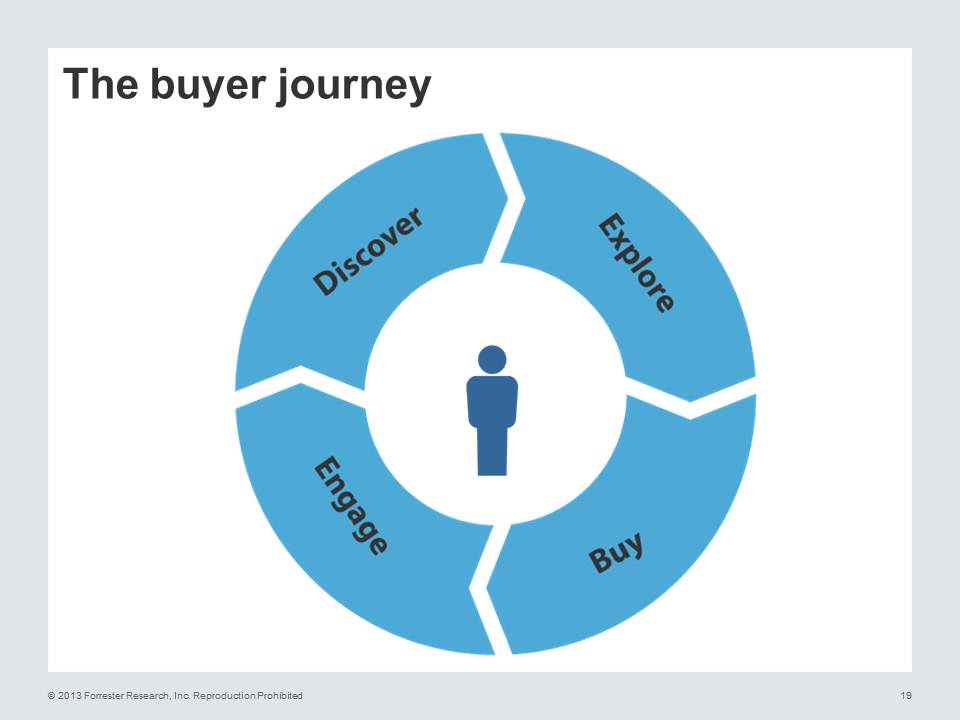Today’s post comes from Peter O’Neill, Vice President and Principal Analyst at Forrester Research where he leads Forrester’s research on B2B demand generation and channel marketing, managing a small group of analysts and working with other analysts who serve CMOs and other marketing leaders. His personal background is in international marketing, with a specific emphasis on field marketing strategy/execution coupled with the interaction dynamics between HQ and field marketing.
What Is It That Great Content Marketers Do Well?
Social media and our digitally-driven on demand culture has drastically changed the way that buyers navigate their purchase process. This has major implications on our marketing and sales content. At Forrester, we like to talk about the new interaction model of need-match-engage, where the buyers now initiate the interaction and spend a major part of their buyer journey doing their own research before calling in potential suppliers.
Great content marketers are good at “skunk marketing”
That means being found by buyers in their early research phase (the phases we call discover and explore). B2B buyers tell us that 70% of the content they read and study before making a purchase decision is actually found by themselves; as opposed to being given to them by marketing or sales? Of course, that isn’t true – it is their perception. In a way, successful marketers have already learned to “fool” their buyers into consuming their thought-leadership and educational content — while hardly realizing its source. Indeed, the most successful marketers know how to mix their brand “scent” into that content without appearing to be selling — to the extent that buyers will count it as part of their 70%. Wow! Could this be the re-emergence of “skunk marketing”?
Great content marketers understand buyers’ needs in the discovery process
What is important about the buyers’ discovery phase is that they definitely do not type “ERP” into a search engine. They look for information (via search, communities, discussion forums, websites, blogs) that is based upon their business issues and outcomes. So the most critical need for content marketers to understand is that their awareness/discovery content must be in the language of the buyer; it must answer the immediate question being posed and not more (certainly no selling or even gatekeeping contact data gathering); and it should accelerate the buyer along their journey. This is actually still the most major challenge for most B2B marketers – they continue to be great at creating content about themselves or their offering but not at creating “outside-in” content.
Great content marketers deliver a customer experience not just content
We see the creation of thought leadership content as being particularly effective. But that isn’t so easy to do. The best thought leadership content is where the vendor takes a definite position, communicates a point of view, about that business issue they solve or improve. Some companies do not understand the issue well enough to formulate a point of view that is compelling (and complying to all the demands I mentioned before). But we have published reports that document some thought leadership best practices from vendors such as Caterpillar, GE, and Owen-Illinois. Another effective content strategy at this stage is to curate content in a branded portal – IBM and American Express do this for their SME segment client base providing general business content not specific to their offerings but compelling for the clients.
Great content marketers leverage their customer reference program budget
Advocacy has become increasingly important, as best practice marketers understand how to harness the power of word of mouth. When clients ask me how can they pay for, and find resources for all this new content work I always suggest they close down their traditional customer reference programs and re-use the budget and resources. The laborious process of finding a customer, interviewing them; writing up the case study and then getting (or not getting) legal and PR approval for a publication is non-productive. Nowadays, marketers should find their advocates by deploying listening platforms, continually offering “like” feedback functions on all their interactions (marketing as well as after-sales) and encouraging those customers who are delighted to network their opinions freely.
Thanks for reading this and, if you’d like to continue the conversation with me on this topic, drop me a line in email or via social media.
 Always keeping you informed!
Always keeping you informed!
Peter
blogs.forrester.com/peter_oneill


